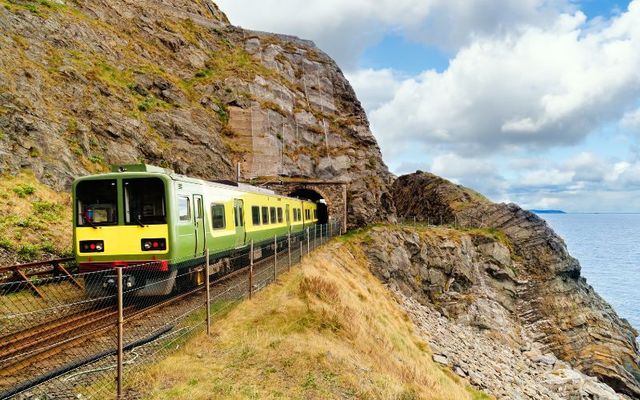Ireland’s Department of Transport and Northern Ireland’s Department of Infrastructure have published a joint draft report of the All-Island Strategic Rail Review (AISRR) “which will put communities across the island on track for a new age of rail” today, July 25.
This is the first all-island rail review, the Departments said on Tuesday, which sets out 30 recommendations for developing a rail network that could transform the rail system north and south of the island with electrification, faster speeds, improved frequency, and new routes.
The Departments said that if the recommendations are implemented in full, a number of new routes could be opened, particularly across the West and North of the island.
3/4 If the recommendations are implemented in full, a number of new routes could be opened particularly across the West and North of the island. pic.twitter.com/ynkaWY3c9v
— Department of Transport (@Dept_Transport) July 25, 2023
A consultation period for both the draft of the AISRR and the Strategic Environmental Assessment (SEA) opened on Tuesday and will close on Friday, September 29 at 11:59 pm. You can learn how to participate in the public consultation here.
The AISRR was launched in April 2021 by Eamon Ryan, Minister for Transport Ireland, and Nichola Mallon, then Minister at the Department for Infrastructure, Northern Ireland.
Minister Ryan said on Tuesday that the Irish government aims to revive the Irish rail network of a century ago, which was "one of the best in the world."
In the 1920s, Ireland had one of the best rail networks in the world. We're reviving that network with:
?️ new lines for people and freight
? half hourly frequencies
? higher speeds
⚡️ electrification
? all island approach?https://t.co/fRjWFEhsj7 pic.twitter.com/qISVDVXwgL
— Eamon Ryan (@EamonRyan) July 25, 2023
The Departments said on Tuesday that the island of Ireland currently has about 2,300 km (1,440 miles) of public rail lines. If the recommendations in this new rail review are implemented, this would increase to 2,950 km (1,845 miles) of new low-carbon, faster rail lines.
Investment in rail between 2011 and 2019 contributed to a 37% growth in passengers across the whole island, the Departments said. While Covid interrupted this growth, passenger numbers are returning strongly in both jurisdictions, giving an indication of the potential for a new and greatly enhanced rail network.
The draft review was commissioned and overseen by both Departments and carried out by the engineering firm Arup. Recommendations, based around six goals, are to be delivered over the coming 25 years, aligning with net-zero commitments in both jurisdictions.
Among the key recommendations are:
Decarbonisation
- Decarbonise the rail network, including an electrified intercity network as well as hybrid, hydrogen and electric rolling stock.
Intercity Speed and Frequency
- Upgrade the core intercity railway network (Dublin, Belfast, Cork, Limerick, Galway, Waterford) to top speeds of 200km/h ensuring that train journeys are faster than the car.
- Upgrade the cross-country rail network to a dual-track railway (and four-track in places) and increase intercity service frequencies to hourly between the main city pairs.
New Regional Connections
- Increase regional and rural lines speeds to at least 120 km/h.
- Reinstate the Western Rail Corridor between Claremorris and Athenry.
- Extend the railway into Tyrone (from Portadown to Dungannon, Omagh, Strabane) Derry- Londonderry, and onto Donegal (Letterkenny)
- Reinstate the South Wexford Railway, connecting to Waterford
- Develop the railway to boost connectivity in the North Midlands, from Mullingar to Cavan, Monaghan, Armagh and Portadown
Sustainable Cities
- Connect Dublin, Belfast International and Shannon Airport to the railway and improve existing rail-airport connections.
- Segregate long-distance and fast services from stopping services, ensuring quicker times on city approaches
Transforming Freight
- Strengthen rail connectivity to the island’s busiest ports and reduce Track Access Charges for freight.
- Develop first-mile-last-mile rail access for Dublin Port
Prioritising Customers
- Improve service quality, provide on-board catering, ‘clock-face’ timetable, better integration with other transport options, and cross-border structures to streamline travel north and south.




Comments